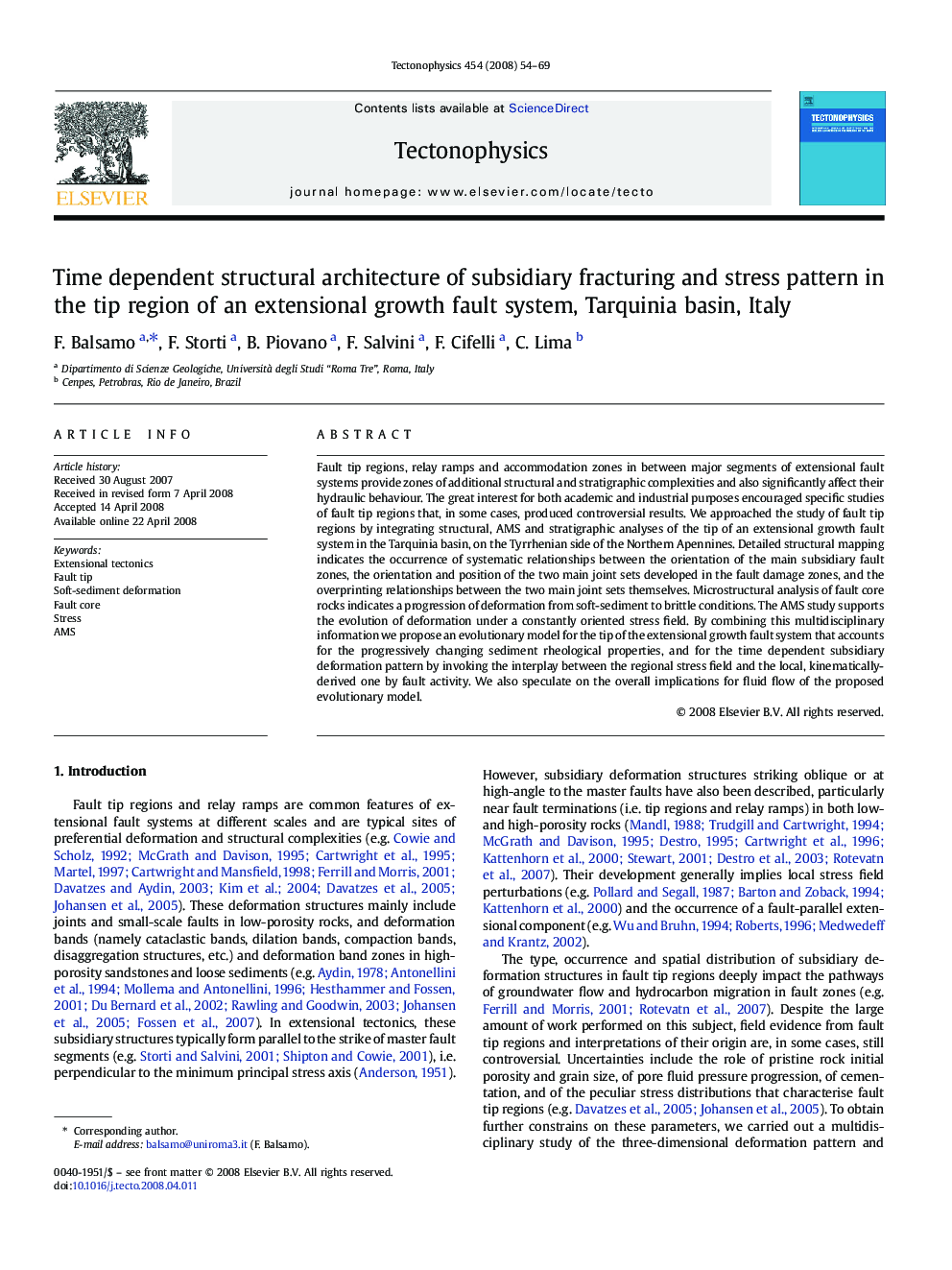| Article ID | Journal | Published Year | Pages | File Type |
|---|---|---|---|---|
| 4694435 | Tectonophysics | 2008 | 16 Pages |
Abstract
Fault tip regions, relay ramps and accommodation zones in between major segments of extensional fault systems provide zones of additional structural and stratigraphic complexities and also significantly affect their hydraulic behaviour. The great interest for both academic and industrial purposes encouraged specific studies of fault tip regions that, in some cases, produced controversial results. We approached the study of fault tip regions by integrating structural, AMS and stratigraphic analyses of the tip of an extensional growth fault system in the Tarquinia basin, on the Tyrrhenian side of the Northern Apennines. Detailed structural mapping indicates the occurrence of systematic relationships between the orientation of the main subsidiary fault zones, the orientation and position of the two main joint sets developed in the fault damage zones, and the overprinting relationships between the two main joint sets themselves. Microstructural analysis of fault core rocks indicates a progression of deformation from soft-sediment to brittle conditions. The AMS study supports the evolution of deformation under a constantly oriented stress field. By combining this multidisciplinary information we propose an evolutionary model for the tip of the extensional growth fault system that accounts for the progressively changing sediment rheological properties, and for the time dependent subsidiary deformation pattern by invoking the interplay between the regional stress field and the local, kinematically-derived one by fault activity. We also speculate on the overall implications for fluid flow of the proposed evolutionary model.
Related Topics
Physical Sciences and Engineering
Earth and Planetary Sciences
Earth-Surface Processes
Authors
F. Balsamo, F. Storti, B. Piovano, F. Salvini, F. Cifelli, C. Lima,
